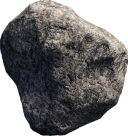
Experiment: Local production
We are now conducting a major experiment and need your help. From the very beginning, our goal was to produce a wool jacket locally here in Norway. We believe that you will wear a garment longer when you know its true cost, who made it, and that it was produced locally.
After months of research and prototyping, we have finally developed a product ready for production. The jacket is made from surplus wool and sewn by Lisa at Moving Mamas in Jevnaker, just outside Oslo. The price is high—yes, sky-high compared to mass-produced garments—but for a good reason. It enables local jobs, supports circularity, and contributes to a more sustainable textile industry.
The question we are left with: Is Norwegian production worth 6,800 NOK?
We need your help. Should we move forward and put it into production? Will you buy the jacket if we produce it?

Why Norwegian-Made?
Norway has a long tradition of textile production, especially with wool. Today, only a handful of producers continue this craft, and the number of skilled seamstresses has declined drastically. By producing clothing in Norway, we create new jobs and preserve valuable expertise. This also provides a unique opportunity to include talented individuals with immigrant backgrounds in the Norwegian workforce.

Stronger Connection to the Garment
Maybe you have a wool sweater knitted by your grandmother 20—or even 40—years ago? And you still wear it. Because it holds sentimental value, you take better care of it, repair it, and use it in different situations. We believe the same principles apply to Norwegian-made clothing. When you know who sewed the garment, where it comes from, and that the people who made it are properly paid, you’ll take better care of it too.

High Price
There are many reasons why the price is what it is. The most important factor is Norwegian wages and labor rights. The next is the quality of the materials. Even though they are surplus materials, the quality is very high and not inexpensive. Thirdly, there is no efficient mass production of clothing in Norway. This means a lot of manual work in every step of the process. It takes time and requires skilled craftsmanship from talented people.
If we choose to move forward with this production, we will earn less per garment than what is financially sustainable. But we are willing to accept that.

Easy to Repair – Longer Lifespan
Should the garment show signs of wear or develop holes (as it inevitably will), professional repair is easily accessible. And who is better suited to repair the garment than the very person who sewed it? Locally produced clothing can therefore have a longer lifespan than garments made far away.

